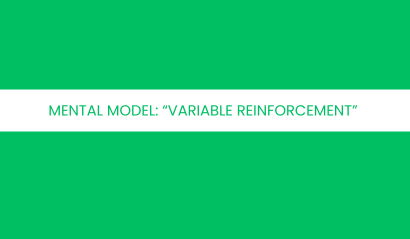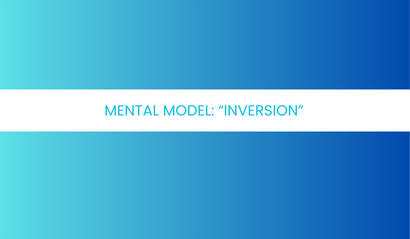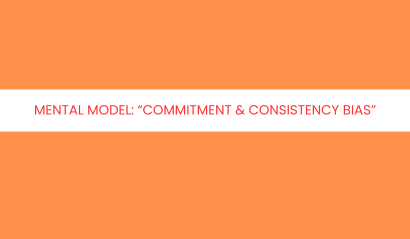Mental Model: Confirmation Bias
Human cognition is a fascinating yet flawed system. Our brains are wired to process immense amounts of information, but this efficiency sometimes comes at the cost of accuracy. One of the most common cognitive biases that influence our thinking is confirmation bias. This psychological tendency affects how we gather, interpret, and remember information, often leading us to reinforce our preexisting beliefs while dismissing contradictory evidence.
In this blog post, we will explore the origins of confirmation bias, understand its mechanisms, examine real-world examples, and learn practical ways to avoid falling into its trap.
The Origin of Confirmation Bias
The concept of confirmation bias has been studied extensively in psychology and cognitive science. The term itself was popularized by English psychologist Peter Wason in the 1960s. Wason conducted a famous experiment known as the “Wason Rule Discovery Task,” where he asked participants to identify a pattern in a sequence of numbers. He found that most participants only tested hypotheses that confirmed their assumptions rather than seeking contradictory evidence that could disprove them.
This tendency aligns with the broader psychological principle known as the “belief perseverance effect,” where individuals cling to their initial beliefs even in the face of strong counterevidence. Over time, confirmation bias has been recognized as a pervasive cognitive error affecting decision-making, reasoning, and social behavior.
Understanding Confirmation Bias
Confirmation bias operates on three levels:
- Selective Search for Information – People tend to seek out information that aligns with their preexisting beliefs while ignoring sources that contradict them. This is evident in the way individuals consume news, follow social media accounts, and engage in discussions.
- Interpretation of Information – Even when confronted with neutral or ambiguous data, individuals often interpret it in a way that supports their existing viewpoints. This subjective analysis reinforces biases rather than allowing for objective reasoning.
- Memory Recall – People are more likely to remember information that aligns with their beliefs and conveniently forget or distort facts that challenge them. This leads to a skewed recollection of past events and experiences.
The impact of confirmation bias extends across various domains, including politics, business, relationships, and even scientific research.
Real-World Examples of Confirmation Bias
1. Politics and News Consumption
Political ideologies are fertile ground for confirmation bias. Individuals who strongly support a political party tend to consume media that aligns with their views, whether it’s conservative, liberal, or centrist. They are more likely to dismiss opposing perspectives, labeling them as biased or incorrect. This creates ideological echo chambers, where people reinforce their existing beliefs without critical examination.
2. Social Media Algorithms
The digital age has exacerbated confirmation bias. Platforms like Facebook, Twitter, and YouTube use algorithms to show users content they are most likely to engage with. If someone frequently interacts with content that supports a particular viewpoint, the algorithm will continue feeding them similar content, reinforcing their beliefs while filtering out diverse perspectives.
3. Business and Investment Decisions
Investors often fall victim to confirmation bias when evaluating stocks or business strategies. If an investor believes a particular company will succeed, they may focus only on positive reports while ignoring warning signs that suggest otherwise. This can lead to financial losses due to overconfidence in an incomplete analysis.
4. Relationships and Personal Judgments
In interpersonal relationships, confirmation bias influences how people perceive others. If someone forms a negative opinion about a colleague or acquaintance, they tend to notice and remember only actions that validate their initial judgment while ignoring positive behaviors.
5. Scientific Research
Even in the scientific community, confirmation bias can influence research. Scientists may design experiments or interpret data in ways that confirm their hypotheses, sometimes unconsciously dismissing contradictory findings. This is why peer review and replication studies are crucial to maintaining scientific integrity.
The Dangers of Confirmation Bias
While confirmation bias might seem harmless in casual discussions, it can have significant consequences, including:
- Misinformation Spread: When individuals accept and share only information that aligns with their beliefs, false narratives can spread widely, influencing public opinion.
- Poor Decision-Making: Whether in business, politics, or personal life, biased decision-making can lead to flawed strategies and undesirable outcomes.
- Polarization: A lack of exposure to differing viewpoints fosters societal division, making constructive debates and problem-solving more difficult.
- Resistance to Change: If people refuse to consider alternative perspectives, innovation and progress in various fields can be stifled.
How to Avoid Confirmation Bias
While confirmation bias is a natural cognitive process, being aware of it is the first step toward mitigating its effects. Here are some practical ways to overcome it:
1. Seek Out Diverse Perspectives
Actively exposing yourself to different viewpoints challenges preconceived notions and broadens your understanding. Read opinions from various sources, engage in discussions with people holding different beliefs, and remain open to changing your mind when presented with strong evidence.
2. Practice Critical Thinking
Before accepting any claim, ask yourself:
- What is the source of this information?
- Are there alternative explanations?
- What evidence supports and contradicts this claim? By questioning assumptions, you develop a more balanced approach to analyzing information.
3. Play Devil’s Advocate
Make a habit of arguing against your own beliefs. This forces you to consider counterarguments and helps identify weaknesses in your reasoning. This practice is especially valuable in business and decision-making scenarios.
4. Use Data and Evidence-Based Reasoning
Whenever possible, rely on empirical evidence rather than anecdotal experiences or personal biases. Well-researched data helps in forming more objective conclusions.
5. Engage in Constructive Debates
Healthy debates with informed individuals can expose you to new ideas and challenge your thinking. Approach discussions with curiosity rather than the intent to “win.”
6. Be Willing to Admit When You’re Wrong
Recognizing and accepting mistakes is a sign of intellectual maturity. Instead of doubling down on incorrect beliefs, embrace learning and growth.
7. Slow Down Your Thinking Process
Often, people make quick judgments based on gut feelings rather than rational analysis. Taking the time to reflect on your thoughts and decisions can reduce the likelihood of confirmation bias.
Conclusion
Confirmation bias is an inherent flaw in human thinking, but acknowledging its existence is the first step toward overcoming it. By actively seeking out diverse perspectives, practicing critical thinking, and embracing intellectual humility, we can make more informed decisions and foster a more open-minded society.
In a world flooded with information, our ability to think objectively is more crucial than ever. The next time you come across an idea that challenges your beliefs, instead of dismissing it outright, pause and consider: Could I be wrong? That simple question has the power to transform the way you think and engage with the world around you.







